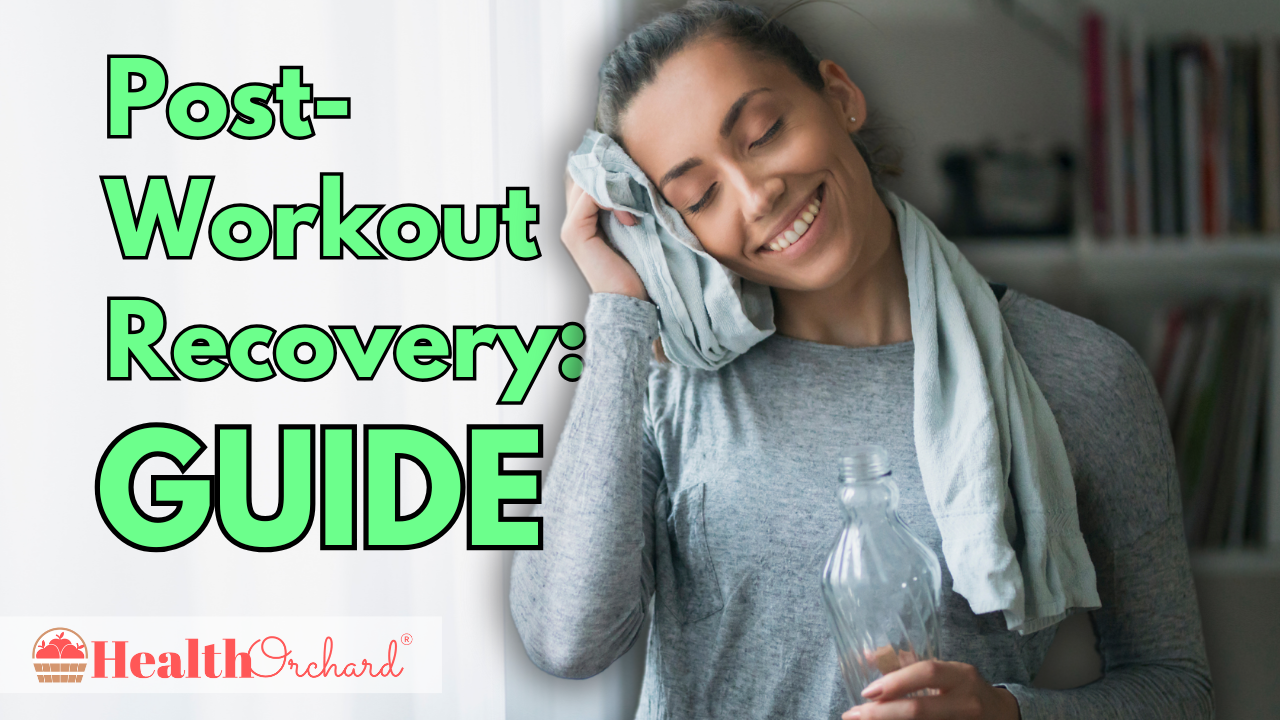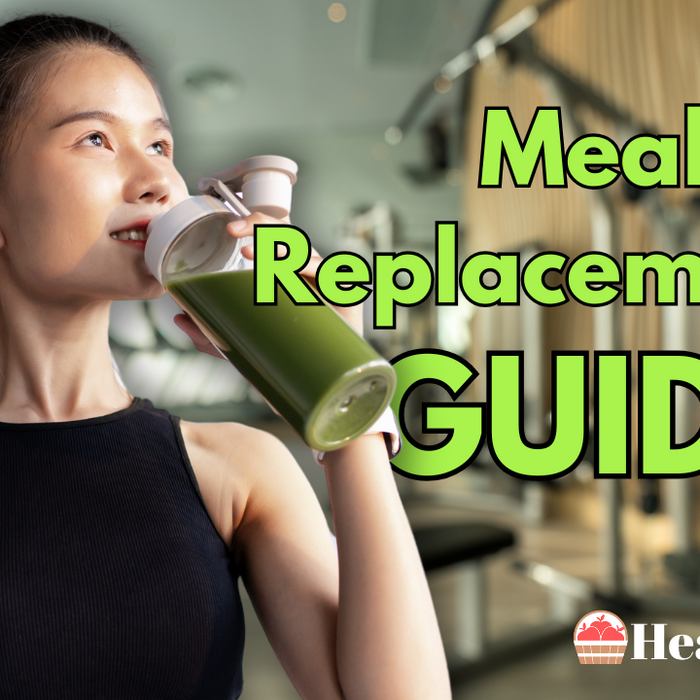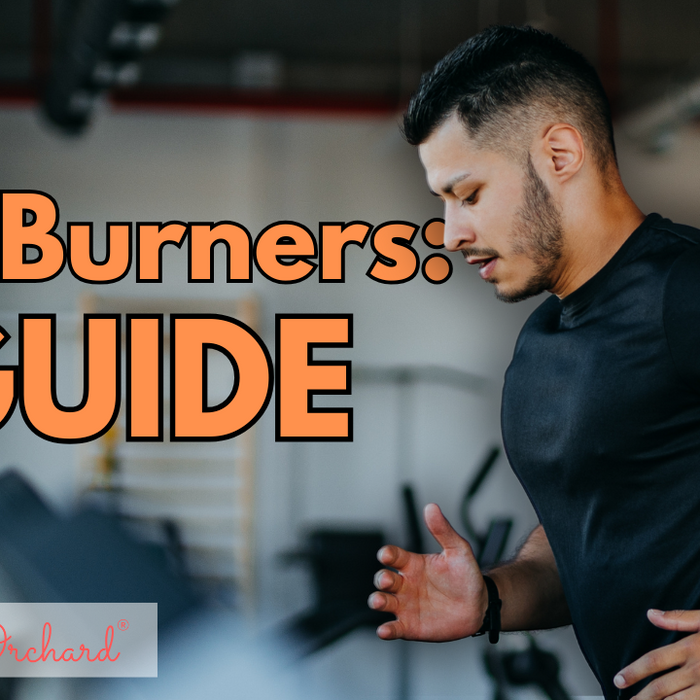

Post-Workout Recovery: Guide
Key Takeaways
- Post-Workout Recovery is Essential: It repairs muscles, reduces soreness, replenishes energy, and prevents injuries, ensuring long-term fitness progress.
- Hydration is Non-Negotiable: Replenishing fluids and electrolytes lost during exercise is critical for muscle function and overall recovery.
- Nutrition Fuels Recovery: Consuming a mix of protein and carbohydrates within 30–60 minutes post-exercise helps rebuild muscle fibres and restore glycogen levels.
- Sleep Drives Muscle Repair: Quality sleep allows your body to release growth hormones and fully recover from physical stress.
- Stretching and Mobility Reduce Stiffness: Incorporating static stretching, foam rolling, and light mobility work promotes flexibility and faster recovery.
- Active Recovery Keeps You Moving: Low-intensity activities like walking or yoga improve blood flow and ease muscle soreness without overloading the body.
Did you know that your muscles don’t grow while you’re exercising, but rather during recovery? Exercise creates micro-tears in muscle fibers, and recovery is when these tears are repaired and strengthened. However, neglecting proper recovery can lead to prolonged soreness, fatigue, and even injury. Whether you’re new to fitness or a seasoned athlete, optimizing your post-workout recovery can dramatically improve your performance and long-term results.
At Health Orchard, we understand that recovery is a crucial component of any fitness journey. That’s why we’ve created this comprehensive guide to help you build an effective recovery routine.

Why Post-Workout Recovery Matters
Your body undergoes intense physical stress during exercise, which depletes energy stores and causes muscle fatigue. The recovery process allows your muscles to repair, your energy to replenish, and your body to adapt to the workload. Skipping recovery can lead to overtraining, decreased performance, and even injury.
When done right, recovery offers numerous benefits, such as:
- Enhanced muscle growth: During the recovery period, your body initiates protein synthesis to repair microscopic muscle damage, resulting in stronger and more resilient muscle tissue through a process called supercompensation. The combination of proper nutrition and rest during this time ensures optimal conditions for muscle repair and growth.
- Reduced soreness: Strategic recovery techniques like proper cool-downs, hydration, and targeted stretching help minimize the buildup of metabolic waste products and reduce inflammation that contributes to delayed-onset muscle soreness (DOMS). Implementing effective recovery practices can significantly decrease recovery time between workouts and help maintain consistent training frequency.
- Improved performance: The rest and recovery phase allows your body to replenish depleted glycogen stores and restore normal hormone levels, while also giving your nervous system time to reset from intense training demands. This comprehensive recovery process ensures you'll have the energy, strength, and mental focus needed to perform at your best in subsequent training sessions.
Key Components of an Effective Recovery Routine
Hydration
Rehydration is crucial for post-workout recovery because your body loses fluids and electrolytes through sweat during exercise. Even mild dehydration can affect physical and cognitive performance, making it harder for your body to recover. Drinking water immediately after your workout helps restore fluid balance, while electrolyte drinks can replenish lost minerals like sodium, potassium, and magnesium, which are essential for muscle function and hydration.
To ensure proper hydration, aim to drink 500–750 mL of water within 30 minutes of finishing your workout. For more intense or long-duration sessions, consider beverages like coconut water or specially formulated electrolyte drinks to speed up recovery. Avoid sugary or caffeinated drinks, as these can dehydrate you further. Remember, hydration is an ongoing process, so continue sipping water throughout the day.
Nutrition
Post-workout nutrition is key to replenishing energy stores and repairing muscle tissue. During exercise, your body uses glycogen as its primary energy source, and intense training depletes these reserves. Eating a combination of protein and carbohydrates after a workout replenishes glycogen and provides amino acids to rebuild muscle fibers.
Aim to consume a snack or meal within 30–60 minutes of exercising. Include 20–30 grams of protein from sources like lean meat, eggs, or plant-based alternatives, and pair it with complex carbohydrates like brown rice, sweet potatoes, or whole grains. Healthy fats, such as those in avocado or nuts, can also support recovery without slowing digestion. Some examples of balanced post-workout meals include a protein smoothie with a banana, Greek yogurt with berries and granola, or grilled chicken with quinoa and vegetables.
Rest and Sleep
Rest and sleep are foundational to post-workout recovery, as they give your body the time it needs to repair and rebuild. During sleep, your body releases growth hormone, which is essential for tissue repair and muscle growth. Skimping on sleep can impair this process, leaving you feeling fatigued and less able to perform in future workouts.
Adults should aim for 7–9 hours of uninterrupted, quality sleep per night to fully recover. To improve your sleep quality, establish a consistent bedtime routine, avoid screens an hour before bed, and create a sleep-friendly environment by keeping your room cool and dark. Short naps of 20–30 minutes during the day can also help supplement recovery, especially if you’ve had an intense workout.
Stretching and Mobility Work
Stretching and mobility exercises are often overlooked but play a vital role in reducing muscle stiffness and enhancing flexibility. Static stretching, performed after a workout, helps to relax muscles and improve range of motion. Dynamic stretching, on the other hand, is more suited for warming up pre-workout but can also be incorporated into your cool-down to ease the transition into recovery.
Foam rolling, a form of myofascial release, is another effective technique for alleviating muscle tightness and soreness. By targeting trigger points in your muscles, foam rolling promotes blood flow and speeds up recovery. Focus on key muscle groups such as hamstrings, calves, quads, and back. Adding just 5–10 minutes of stretching or foam rolling after your workout can make a significant difference in how your body feels the next day.
Active Recovery
Active recovery involves low-intensity activities that help your body recover without overloading it. This approach promotes better circulation, which delivers oxygen and nutrients to your muscles while flushing out waste products like lactic acid. Active recovery days are an excellent alternative to complete rest and can help reduce stiffness and improve mobility.
Examples of active recovery include walking, swimming, yoga, or light cycling. These activities are gentle on the body and can be done for 20–30 minutes. The goal is to stay active without straining yourself. For instance, a brisk walk or a restorative yoga session can ease soreness while keeping you physically engaged. Active recovery should leave you feeling refreshed, not exhausted.
Common Post-Workout Recovery Mistakes
Avoiding common mistakes can significantly improve your recovery results. Here are a few to watch out for:
- Overtraining: Excessive training without proper recovery periods can lead to decreased performance, increased injury risk, and potential long-term setbacks in your fitness progress.
- Skipping hydration or nutrition: Missing your post-workout nutrition and hydration window can significantly slow muscle recovery and compromise your body's ability to replenish glycogen stores.
- Relying on supplements alone: While supplements can support recovery, they cannot compensate for poor sleep habits, inadequate nutrition, or improper training protocols.
- Skipping the cool-down: Neglecting to properly cool down after exercise can lead to blood pooling, increased muscle soreness, and reduced recovery efficiency.
Tools and Technologies for Recovery
Modern tools and technologies can make recovery more efficient and enjoyable:
- Foam rollers and massage guns: These self-myofascial release tools help break up muscle adhesions and trigger points while stimulating blood flow to accelerate recovery.
- Compression gear: Strategic compression clothing can enhance circulation, reduce muscle oscillation during movement, and help prevent post-exercise swelling.
- Fitness trackers: Advanced wearable devices can monitor critical recovery metrics like heart rate variability, sleep quality, and training load to help optimize your recovery timing.
- Recovery apps: Digital platforms utilizing artificial intelligence and user data can provide personalized recovery recommendations and track progress over time.
Sample Post-Workout Recovery Routine
Here's a quick 30-minute recovery routine to incorporate into your fitness regimen:
- Cool down: Gradually decrease your exercise intensity with light movement and dynamic stretches to help your body transition from high activity to rest.
- Rehydrate: Consume adequate fluids immediately post-workout to replace what was lost through sweat and support cellular repair processes.
- Snack smart: Consume a balanced combination of protein and carbohydrates within 30 minutes of exercise to jumpstart muscle recovery and glycogen replenishment.
- Foam roll: Target major muscle groups with self-myofascial release techniques to reduce tension and promote better circulation to recovering tissues.
- Relax: Apply appropriate temperature therapy and engage in stress-reducing activities to promote optimal recovery and prepare for your next training session.
Conclusion
Proper post-workout recovery is more than just a good habit—it's a game-changer for your fitness progress. By staying hydrated, eating balanced meals, prioritizing rest, and incorporating tools like foam rollers, you can reduce soreness, improve performance, and avoid burnout. Small, consistent improvements to your hydration, nutrition, rest, and mobility habits can lead to significant results, as recovery forms the foundation of long-term fitness success.
At Health Orchard, we're committed to supporting your health and fitness journey with expert advice and high-quality wellness products. Our range of recovery tools, vitamins, and supplements from trusted retailers helps you take your recovery to the next level, all while ensuring you get the best value through competitive pricing. Prioritize your fitness recovery today to unlock your full potential tomorrow.
Frequently Asked Questions about Post-Workout Recovery
1. What is the best recovery supplement after a workout?
Whey protein is considered the optimal post-workout supplement due to its rapid absorption and complete amino acid profile. BCAAs (Branched-Chain Amino Acids), glutamine, and electrolyte supplements also support recovery. A combination of protein and carbohydrates may be most effective for complete recovery.
2. Is 1 day of rest enough for muscle recovery?
One day of rest can be sufficient for smaller muscle groups and moderate workouts. However, larger muscle groups and intense training sessions may require 48-72 hours for full recovery. Individual factors like training experience, nutrition, and sleep quality affect recovery time.
3. What should I do immediately after a workout?
Consume protein and carbohydrates within 30 minutes, rehydrate properly, perform light stretching, and cool down gradually. Change into dry clothes to regulate body temperature. Consider foam rolling or light mobility work to promote recovery and reduce muscle tension.
4. Why is it important to recover after exercise?
Recovery allows muscle repair and growth, replenishes energy stores, reduces inflammation, and prevents overtraining. Proper recovery optimizes training adaptations, reduces injury risk, improves performance in subsequent workouts, and supports long-term fitness progress.
5. What not to do immediately after exercise?
Avoid sitting still for extended periods, skipping post-workout nutrition, taking hot showers/saunas immediately, consuming alcohol, or starting another intense activity. Don't skip cool-down exercises or proper hydration. Avoid heavy meals that might slow recovery.
6. Which foods help muscle recovery?
Focus on protein-rich foods (lean meats, fish, eggs), complex carbohydrates (sweet potatoes, quinoa, brown rice), anti-inflammatory foods (berries, leafy greens), and foods high in potassium (bananas, avocados). Include healthy fats from nuts, seeds, and fish.
7. Are eggs good for muscle recovery?
Yes, eggs are excellent for muscle recovery. They provide high-quality complete protein, essential amino acids, healthy fats, and micronutrients like vitamin D and B vitamins. The combination of protein and nutrients supports muscle repair and energy restoration.
8. When should I drink recovery drink?
Consume recovery drinks within 30 minutes post-workout during the "anabolic window." This timing optimizes nutrient absorption and glycogen replenishment. For longer or more intense workouts, consider starting consumption during the latter part of exercise.
9. Is a post-workout drink necessary?
While not absolutely necessary, post-workout drinks can be beneficial for convenience and rapid nutrient delivery. Whole foods can provide similar benefits. The necessity depends on workout intensity, goals, meal timing, and individual preferences.
10. Is hot and cold water good for muscle recovery?
Contrast therapy (alternating hot and cold) can aid recovery by improving circulation and reducing inflammation. Cold reduces swelling and muscle soreness, while heat promotes blood flow and relaxation. This technique can be particularly effective after intense training sessions.
References
- Healthline, “14 Tips to Maximize Muscle Recovery”, April 2024.
- Everyday Health, “Post-Workout Muscle Recovery: How to Let Your Muscles Heal and Why”, March 2023.
- Cleveland Clinic, “A Post-Workout Recovery Plan for Healthy Muscle Growth”, May 2022.
- Verywell Fit, “10 Tips to Speed Recovery After Exercise”, May 2023.
- Mayo Clinic, “These 5 things may help improve recovery after a tough workout”, May 2024.
- Dr. Axe, “Muscle Recovery Do’s and Don’ts for Optimal Fitness”, December 2024.
- Men’s Health, “12 Post-Workout Foods That Help You Build Muscle and Recover Faster”, August 2024.
- Anytime Fitness, “What to Do After a Workout: Your Ultimate Guide to Post-Workout Recovery”, September 2024.
- WebMD, “What to Know About Active Recovery Workouts”, May 2023.
- Verywell Health, “Nutrition & Supplements for Post-Workout Muscle Recovery”, September 2024.







